« Dispatches », Paris
« Dispatches »
with Lotte Andersen, Aaron Angell, Aysha E Arar, Gabriella Boyd, Brian Griffiths, Clara Hastrup, Hamish Pearch, John Alexander Skelton, Catherine Story, Sean Steadman, Lewis Teague Wright
organised by Hamish Pearch
Bringing thirteen non-native artists and makers to Paris, Dispatches is an exploration of the various ways in which we travel through, drift apart, and the ways in which creative production can traverse space and place.
Serving as human plinths, John Alexander Skelton’s dressed mannequins become bodies in the room, static viewers cloaked in archival pieces by the English designer, whose research-based work explores historical folk traditions of the British Isles, with brooches hand-crafted in collaboration with Slim Barrett punctuating the walls between three silhouettes.
Each figure constitutes an island in itself, but with every new visitor the room becomes an ever-evolving archipelago of inner worlds. Puppets join mannequins in becoming pilgrims and unmoving performers, the watchers and the watched. Brian Griffiths’ puppets sit unanimated yet full of potential, dreaming of life on the road or cocooning into themselves introspectively. Also in transit, Gabriella Boyd’s ghostly figures journey between states, representing the ephemerality of psychological space.
Works on paper by Aysha E Arar become physical dispatches from her native Palestine; a mermaid who discovers she is not part of the fish world, a liminal being out of place. Creative resistance seeps through even the tightest of cracks, and dreaming itself becomes a form of travel. Meanwhile, Lotte Andersen’s work touches on family histories of immigration and poetic diaspora, in her family’s case from the Caribbean and India to the UK.
Aaron Angell’s slow-moving snail carries its glazed house upon its back, frozen in time by the alchemical kiln. A geological mix of sifted shale, it is material that has enjoyed continental drift. If there is a slow meandering movement to the show, then there is also speed and activity mandated by external forces.
Clara Hastrup’s ‘Perishables’ sees vegetables and fruits modified, remaking the world through a satirical, pseudo-consumerist logic. A fennel existing on borrowed time is set to local CET, a radish is daily reimagined as a shuttlecock. Sean Steadman’s practice is also invested in seeking out new territories through twisted logics. For him, the history of image production, from the prehistoric to contemporary, is corseted, perforated, entangled, swollen, and reframed into a chunky soup on the canvas.
Catherine Story’s sculptures, reminiscent of old film cameras and props, investigate in the capital M Magic conjured up Old Hollywood’s tropes. If Story’s objects are dispatches from a bygone era, then Lewis Teague Wright’s meld nostalgia with a kind of mystical futurism. Polaroids and fingerprints are used as tools of deception, these A.I. generated polaroid images represent a future envisioned by a blind entity within the framework of outdated photographic technology.
Smaller sculptural works flit between macro to micro concerns, negotiated by Hamish Pearch by producing three dimensional events borne from diagrams and material transformations. Positioned in this way, the Earth becomes an island amongst a constellation of stars and galaxies. When we begin to consider island-ness as smallness, as humanness, our only hope is to never stop reaching out for one another.
Song-I Saba & Hamish Pearch
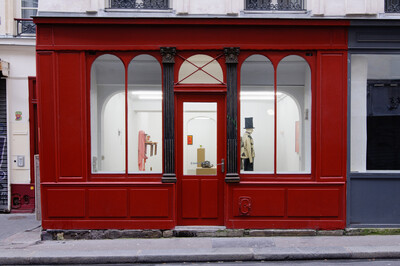
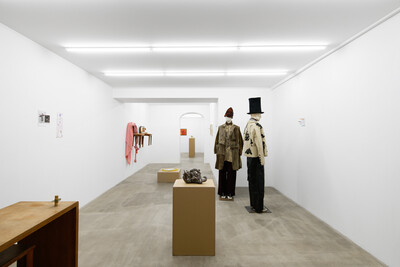
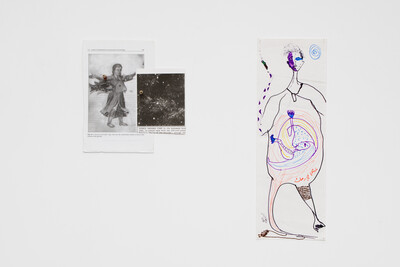
Hamish Pearch, Big Fish, 2024, paper, aluminium, bronze, paint, 22.3 × 20 × 7 cm, unique & Aysha E Arar, Hide me in your womb, 2018, pencil and marker on paper, 40 × 13.7 cm, unique
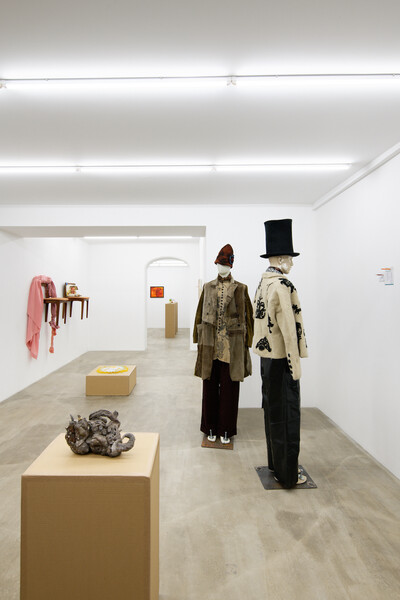

Aaron Angell, Snail, 2023, Anagama natural ash, French & English inclusion bodies, Limoges porcelain, yohen, koge, kani-no-me. Lacquer repair, 17 × 30 × 11 cm, unique
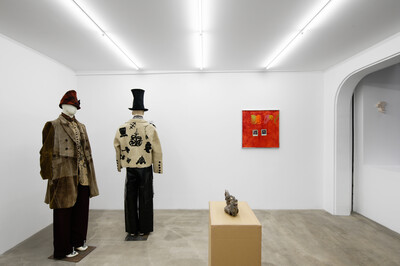
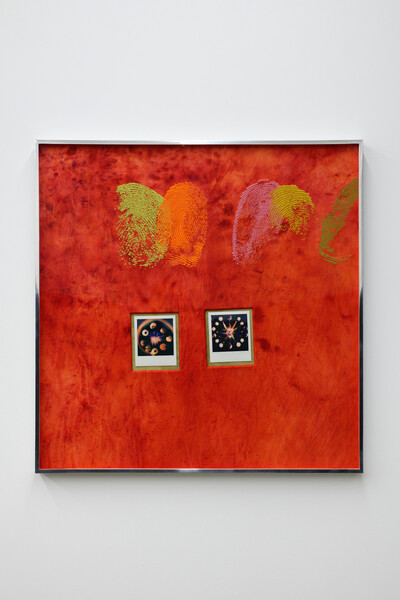
Lewis Teague Wright, FLOATERS_FIVE_AMVIOAEESBEFFRG_AVIOAESSBEWGFRG, 2022, Polaroids, embroidered cotton fabric, mounting board, welded aluminium frames, 72 × 70 cm, unique
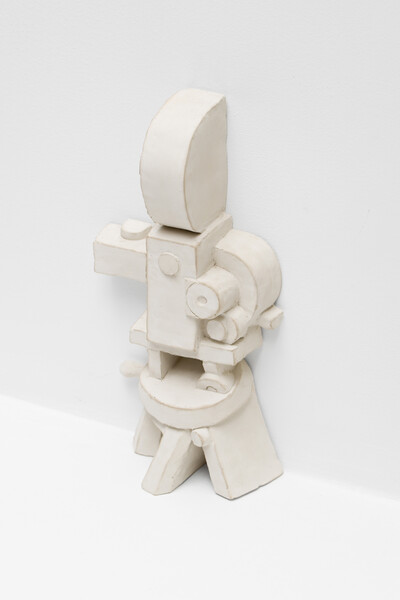
Catherine Story, Sentinel, 2012, unfired clay, 29 × 16 × 9 cm, unique
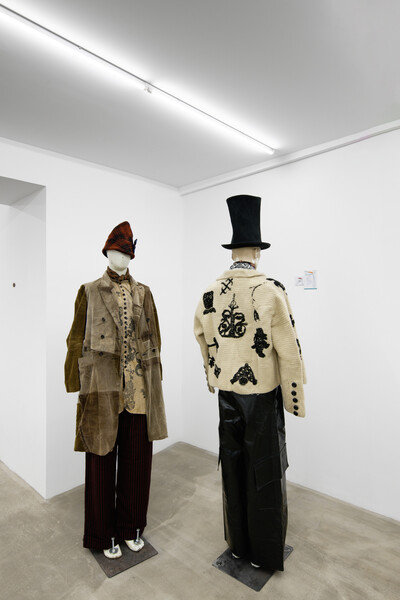
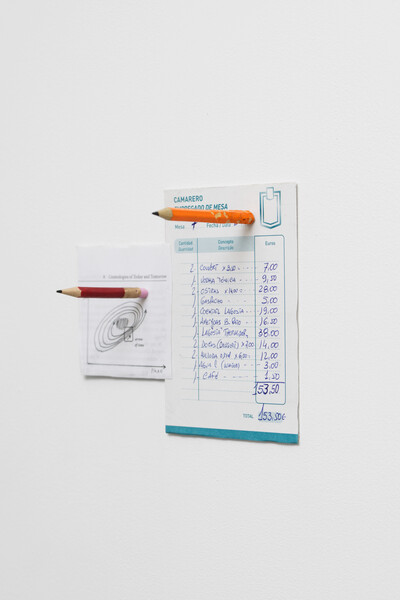
Hamish Pearch, Today and Tomorrow, 2024, paper, aluminium, bronze, paint, 14.5 × 18 × 9 cm, unique

John Alexander Skelton, archival clothes
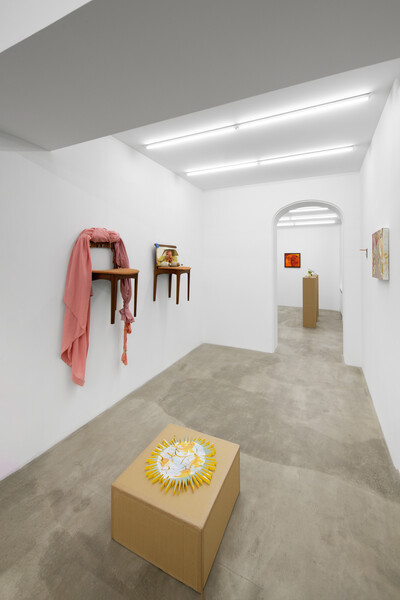
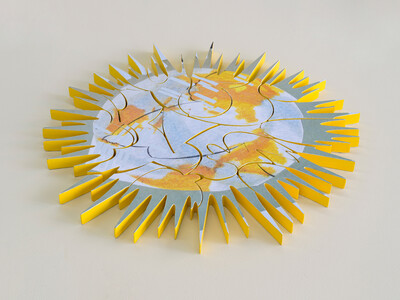
Lotte Andersen, Songs in the Key of Life, 2023, wood, acrylic, paper, polyurethane, and plaster, 50 × 50 cm, unique
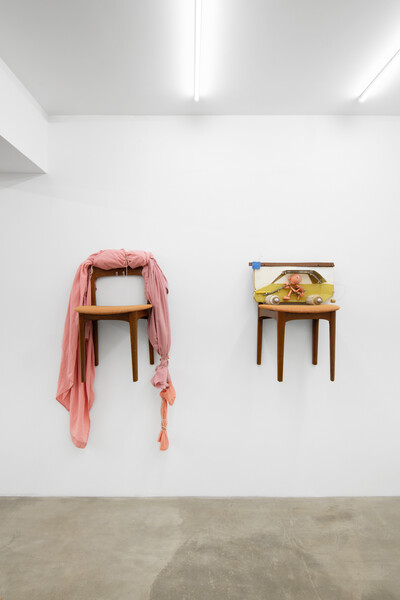

Brian Griffiths, Foot Down with Mustard Car (No No to Knock-Knocks), 2023, wood, plywood, hardboard, cardboard, aluminium, plastic, paint, fabric, tape, wire, chair, fixtures and fittings, 72 × 63 × 48 cm, unique
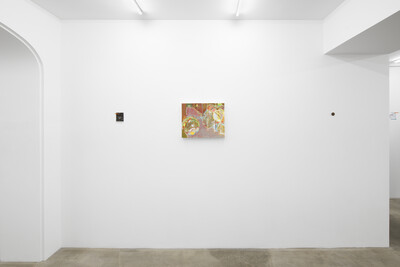

Hamish Pearch, Moon and Star, 2024, paper, aluminium, bronze, paint, 13 × 9.5 × 15 cm, unique
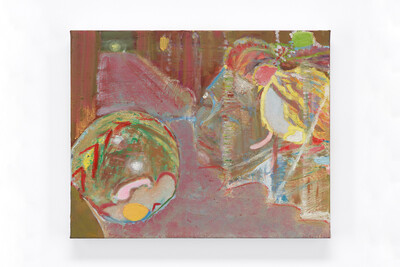
Gabriella Boyd, Two, 2024, oil on linen, 40 × 50 cm, unique

John Alexander Skelton (in collaboration with Slim Barrett), Knowth Brooch, 2024, brass - sterling silver - gold plated sterling silver, ⌀ 4 cm
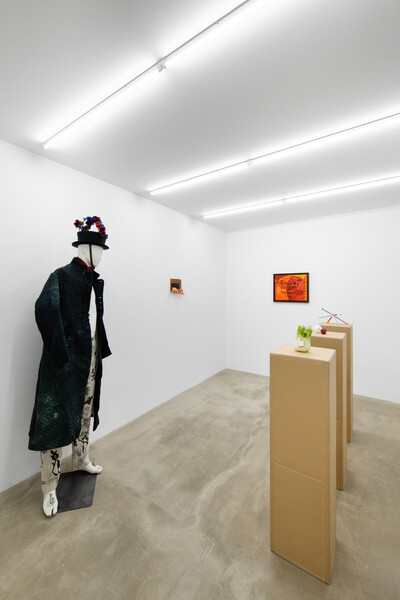
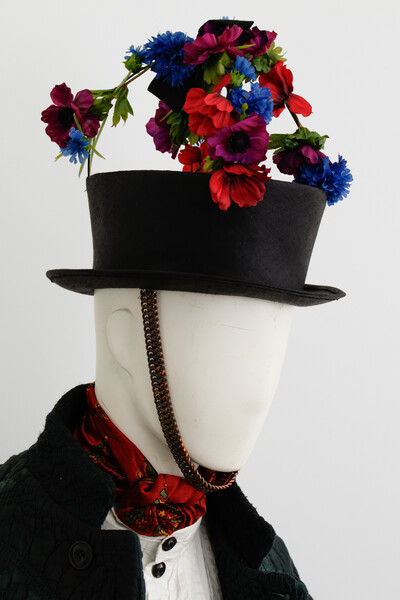
John Alexander Skelton, archival clothes
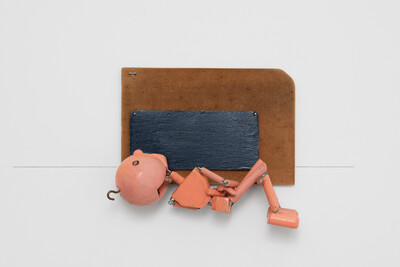
Brian Griffiths, Folded and Packed (No No to Knock-Knocks), 2018, wood, plywood, hardboard, paint, pencil line, fixtures and fittings, 21 × 27 × 11 cm, unique
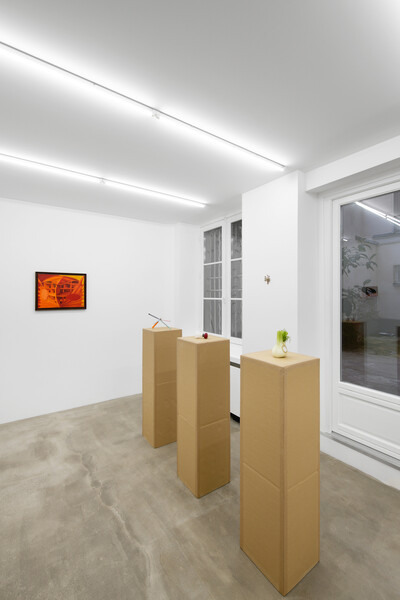
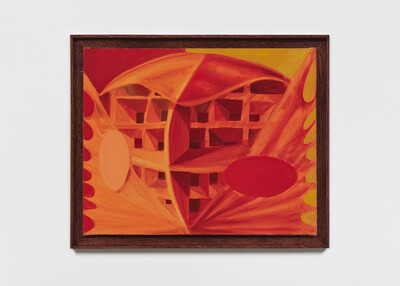
Sean Steadman, Lattice head, 2023, oil on canvas, framed, 46.3 × 57 × 3.7 cm, unique
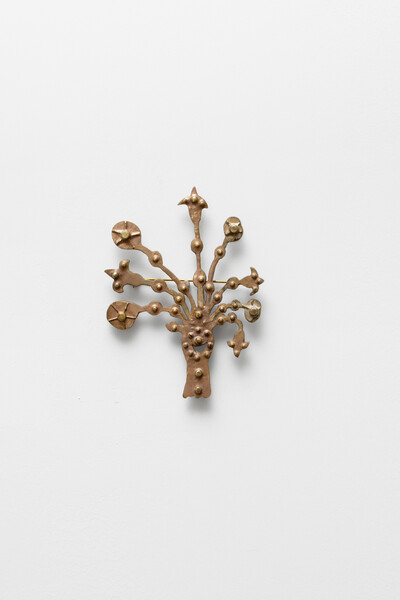
John Alexander Skelton (in collaboration with Slim Barrett), Iron Hinge Brooch, 2024, fused bronze and silver, 9 × 7 cm
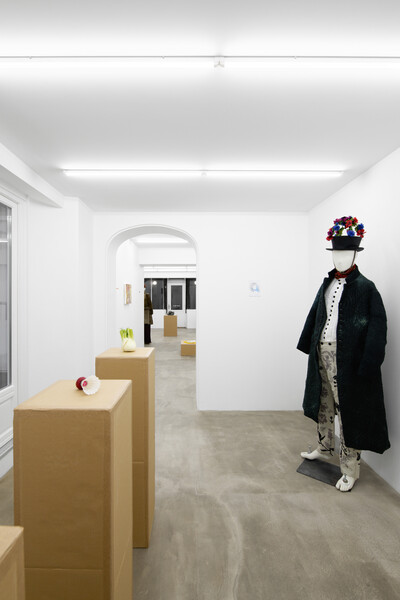
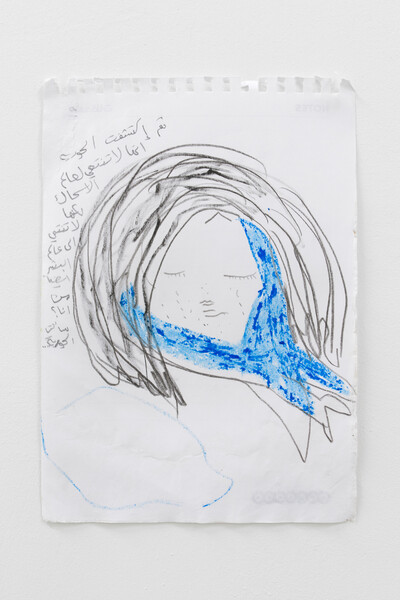
Aysha E Arar, Then the mermaid discovered that she deson’t belong to fish world but she also doesn’t belong to humans world, she asked herself who am I?, 2021, liner, panda and pencil on paper, 21 × 14.8 cm, unique